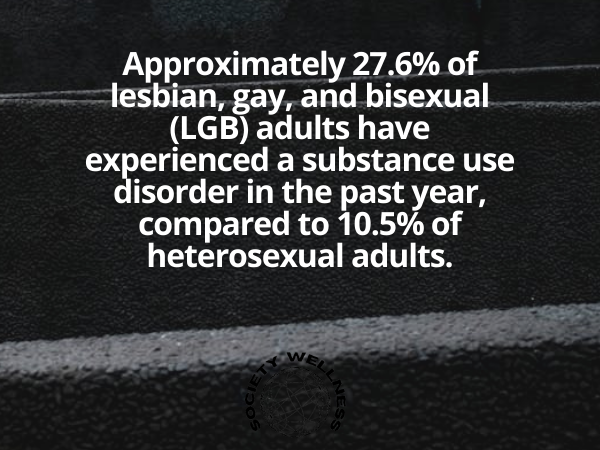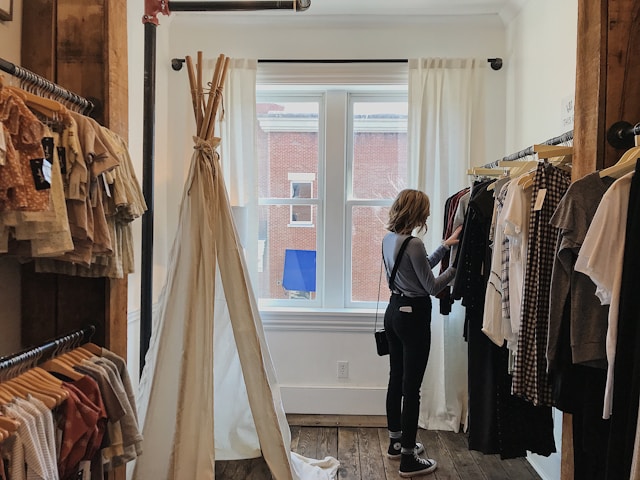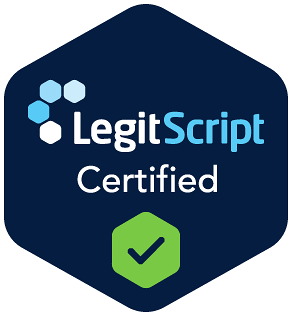Entering an LGBTQ addiction treatment program is a life-changing decision that sets the foundation for long-term recovery. Whether you’re attending an LGBTQ Partial Hospitalization Program (PHP), LGBTQ Intensive Outpatient Program (IOP), or LGBTQ Evening Outpatient Treatment Program, preparing for your stay in rehab is crucial.
Packing for rehab goes beyond just bringing clothes and toiletries. It involves preparing yourself mentally and emotionally for an environment designed to help you heal from addiction while addressing any co-occurring mental health conditions, such as anxiety, depression, PTSD, or past trauma.
For LGBTQ individuals, rehab is not just about overcoming substance use—it’s also about navigating identity, healing from discrimination and rejection, and finding an affirming community. Bringing items that support both your comfort and emotional well-being can enhance your treatment experience and help you stay committed to your recovery goals.
What This Guide Covers
- A detailed checklist of essential items to bring to LGBTQ rehab
- What not to bring to treatment centers
- LGBTQ-specific considerations to ensure a comfortable stay
- How to prepare mentally and emotionally for the experience
- What to expect when arriving at an LGBTQ rehab center
If you or a loved one is preparing for treatment at an LGBTQ rehab center, this guide will ensure you are fully prepared for the next chapter of your recovery journey.
Essentials to Bring to LGBTQ Rehab
Bringing the right items will help you feel comfortable, safe, and focused on your healing process. Here’s a breakdown of what you should pack:
Personal Identification and Medical Documents
Bringing the correct documentation will make the admissions process smoother and ensure that you receive appropriate medical care.
- A government-issued photo ID such as a driver’s license or passport
- Insurance card (if applicable)
- A list of current medications with dosages and prescribing doctor information
- Emergency contact information
- Copies of any relevant medical records, mental health history, and allergy information
Clothing and Footwear
Most LGBTQ rehab centers encourage casual, comfortable, and seasonally appropriate clothing.
- Loose-fitting clothes for everyday activities and group therapy
- Comfortable exercise clothing for yoga, meditation, or fitness therapy sessions
- Pajamas, sweatpants, and layers for comfort
- A light jacket or sweater (rehab facilities can be air-conditioned and chilly)
- Sneakers or comfortable walking shoes for movement-based therapy
- Sandals or slip-on shoes for relaxation periods
If you’re transgender or nonbinary, consider bringing gender-affirming clothing that aligns with your identity while still adhering to the rehab’s dress code. Many LGBTQ rehab centers offer gender-inclusive policies, but it’s always helpful to check with the facility in advance.
Personal Hygiene and Toiletries
Most LGBTQ addiction treatment centers allow only basic toiletries and prohibit products that contain alcohol.
- Toothbrush and toothpaste
- Deodorant (alcohol-free)
- Shampoo and conditioner
- Body wash and lotion
- Feminine hygiene products (if applicable)
- Sunscreen and lip balm
- Razors (if permitted by the facility)
It’s best to bring travel-sized containers to avoid overpacking. Some treatment centers provide toiletries, so check with the facility before your stay.
Medications (If Approved by the Facility)
If you take prescription medications, bring them in their original pharmacy-labeled bottles to comply with rehab regulations.
- Only bring medications prescribed by a doctor
- Do not bring over-the-counter medications unless pre-approved
- Inform staff about mental health medications you are taking before entering rehab
- Avoid supplements or herbal medications unless explicitly allowed
Journal or Notebook
Journaling is a powerful recovery tool. Writing down your thoughts, challenges, and victories can help you process emotions, track progress, and reflect on your journey.
Many LGBTQ rehab centers encourage journaling as part of therapy, helping individuals recognize behavioral patterns and develop healthier coping mechanisms.
Personal Comfort Items
While rehab focuses on healing and self-growth, bringing personal comfort items can provide a sense of familiarity and emotional security.
- A favorite book (recovery-related, inspirational, or LGBTQ-affirming)
- Photos of loved ones, chosen family, or pets
- A small stuffed animal or sentimental item
- LGBTQ Pride items, such as a small flag, wristband, or keychain, as a symbol of self-empowerment
Recovery and Therapy Materials
Some rehab centers allow self-help books, recovery workbooks, or printed affirmations to support personal growth.
- Books on addiction recovery, mental health, or LGBTQ identity
- Printed positive affirmations or daily meditations
- A gratitude list to reflect on why you are choosing recovery
Contact Information for Supportive Friends and Family
Most rehab centers limit phone use, so having a written list of supportive contacts ensures you can reach out to loved ones when allowed.
What NOT to Bring to LGBTQ Rehab
To create a safe and focused environment, LGBTQ addiction treatment programs have strict policies on prohibited items.
Drugs, Alcohol, or Unapproved Medications
- Any non-prescription drugs or herbal supplements
- CBD, vape products, or cigarettes (if not permitted)
- Alcohol or any substances that could interfere with recovery
Electronics (Unless Approved)
- Laptops, tablets, and video game consoles are typically restricted
- Some rehab centers allow cell phones for limited use, while others require them to be stored during treatment
Revealing or Inappropriate Clothing
- Avoid clothing with drug/alcohol references, offensive language, or anything inappropriate
- If you’re unsure about gender-affirming clothing, reach out to the rehab center ahead of time
Weapons or Sharp Objects
- Knives, scissors, or anything that could be considered a safety risk will not be allowed
Outside Food, Drinks, or Caffeine
- Most facilities provide nutritious meals and snacks
- Some rehab centers restrict caffeine, so check before bringing coffee or energy drinks

How to Prepare Mentally and Emotionally for LGBTQ Rehab
Packing for rehab is only part of the process—mentally preparing for your journey is equally important.
1. Set a Positive Mindset
- Recovery is not punishment—it is an opportunity to heal
- Be ready to engage in therapy, group sessions, and self-reflection
- Understand that growth takes time, and setbacks are normal
2. Establish Goals for Treatment
- Write down three personal reasons for seeking recovery
- Identify long-term goals for mental health, sobriety, and self-empowerment
- Prepare to address emotional and identity-related struggles in a supportive setting
3. Trust the Process and the LGBTQ-Affirming Treatment Approach
- LGBTQ addiction treatment programs are designed to be inclusive, affirming, and supportive
- You are not alone—many others in recovery share similar experiences and challenges
Take the First Step Toward LGBTQ Recovery
Packing for rehab is not just about physical preparation—it’s about mentally and emotionally preparing for a transformative journey. By bringing essential items that support your comfort, recovery, and LGBTQ identity, you can maximize your treatment experience.
If you’re ready to start your recovery journey in an LGBTQ-affirming environment, LGBTQ Behavioral Health Center offers comprehensive, inclusive addiction treatment programs tailored to the unique needs of LGBTQ individuals.
Call LGBTQ Behavioral Health today at 888.964.8116 to learn more about LGBTQ addiction treatment programs and take the first step toward a healthier, sober future.
FAQ on What to Bring to LGBTQ Rehab
What should I pack for LGBTQ rehab?
You should bring comfortable clothing, personal hygiene items, medications (if approved), identification, and personal comfort items like a journal or photos. LGBTQ rehab centers may also allow gender-affirming clothing or items, but it’s best to check with the facility.
Can I bring my cell phone to rehab?
Most rehab centers limit or restrict phone use to encourage focus on recovery. Some allow supervised phone access, while others require phones to be stored. Check with the treatment center for their specific policy.
Are there restrictions on what toiletries I can bring?
Yes, many rehab centers prohibit alcohol-based products (such as mouthwash with alcohol). Stick to basic, alcohol-free toiletries like toothpaste, shampoo, conditioner, deodorant, and lotion.
Can I bring medications to LGBTQ rehab?
Yes, but only if they are prescribed by a doctor and brought in their original labeled bottles. Over-the-counter medications, herbal supplements, and unapproved prescriptions are not allowed.
Are gender-affirming items allowed in LGBTQ rehab?
Many LGBTQ rehab centers allow binders, packers, wigs, and other gender-affirming items. However, it’s best to confirm with the facility to ensure a comfortable and inclusive experience.
What should I NOT bring to rehab?
Avoid bringing drugs, alcohol, weapons, inappropriate clothing, food, drinks, and non-approved electronics. Rehab centers create a distraction-free environment focused on healing.
How can I prepare mentally for rehab?
Set positive intentions, write down your goals for recovery, and understand that rehab is a healing opportunity, not a punishment. LGBTQ-affirming treatment programs provide safe spaces to address addiction, trauma, and mental health struggles.

